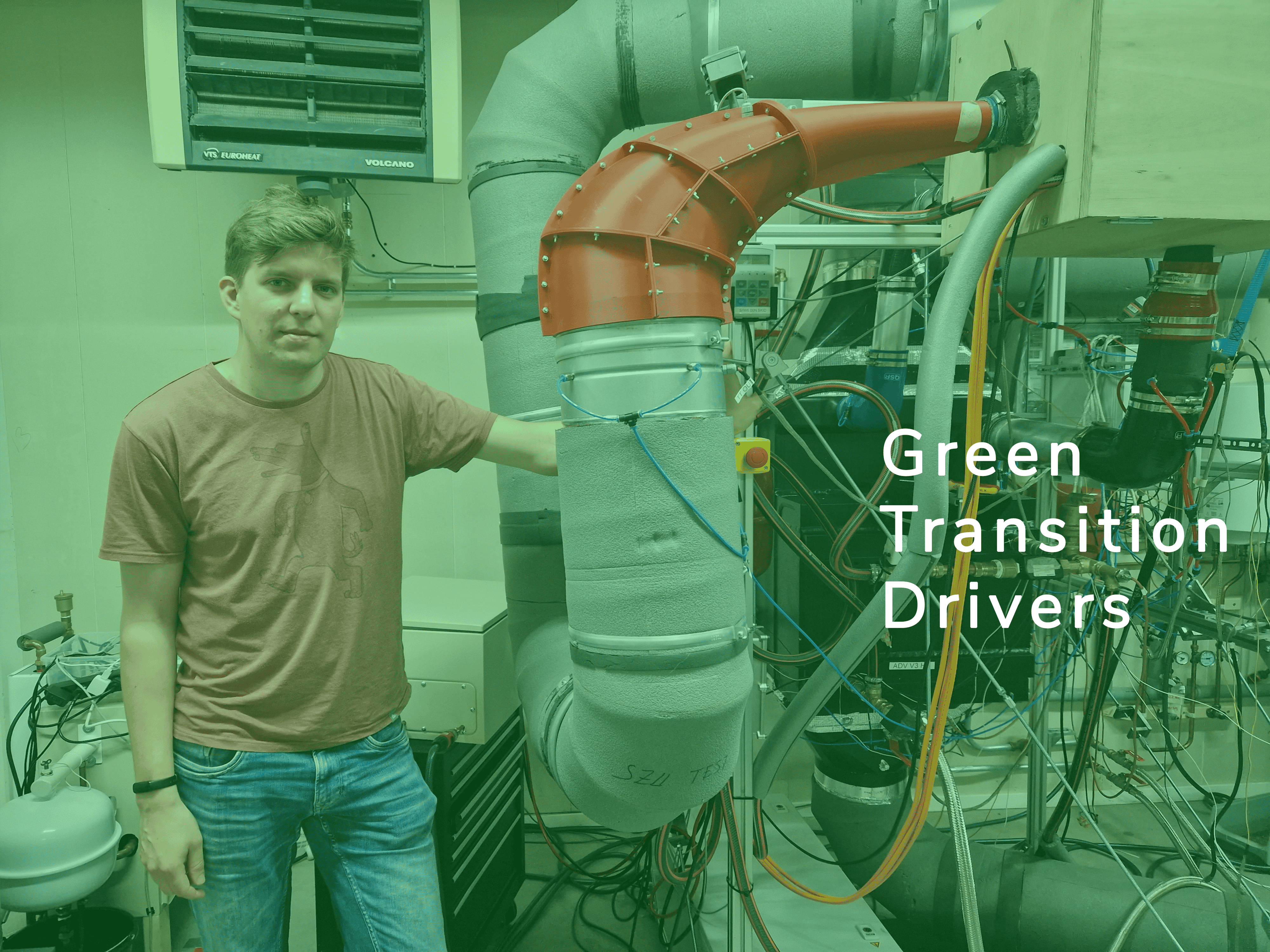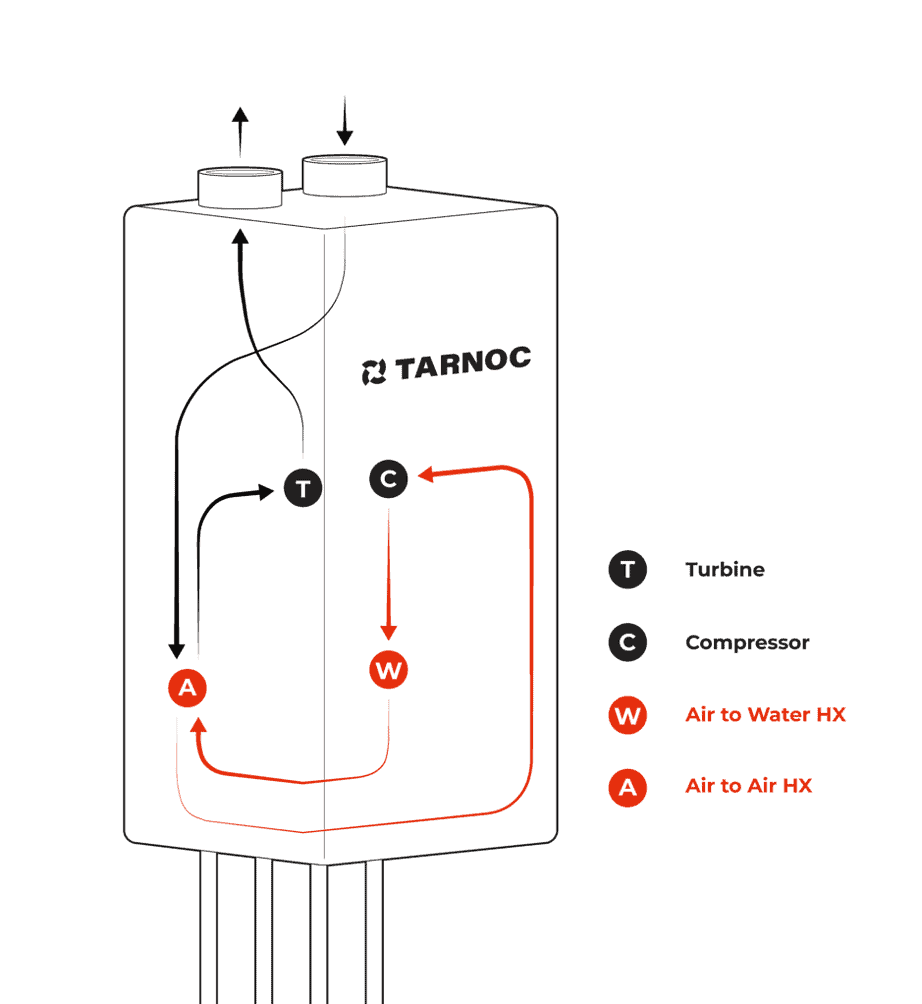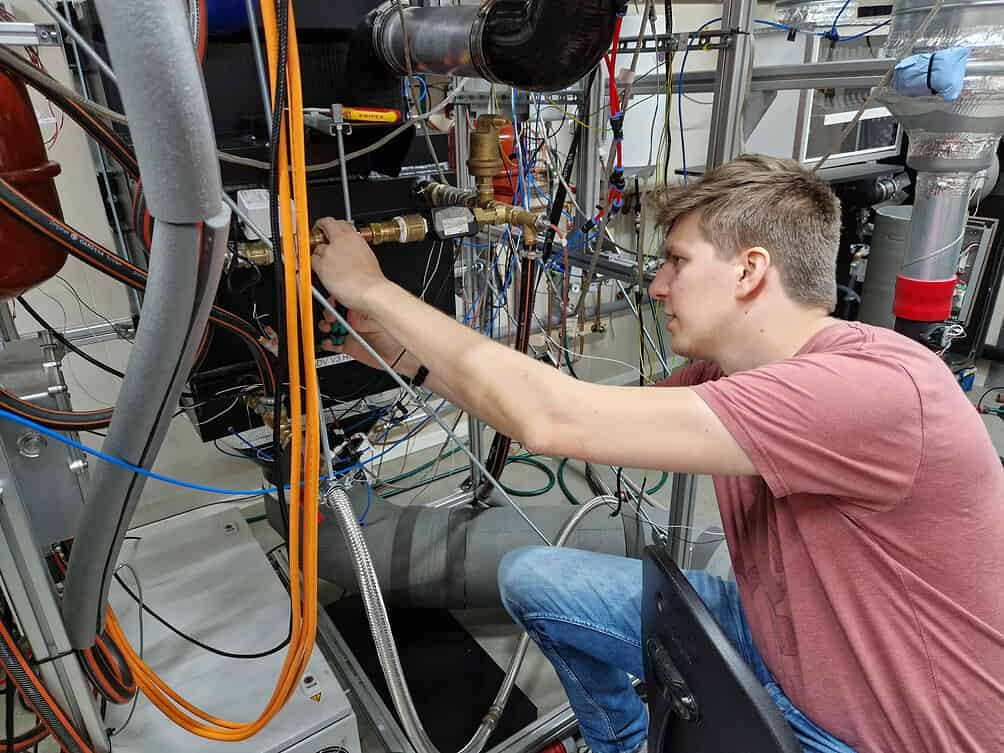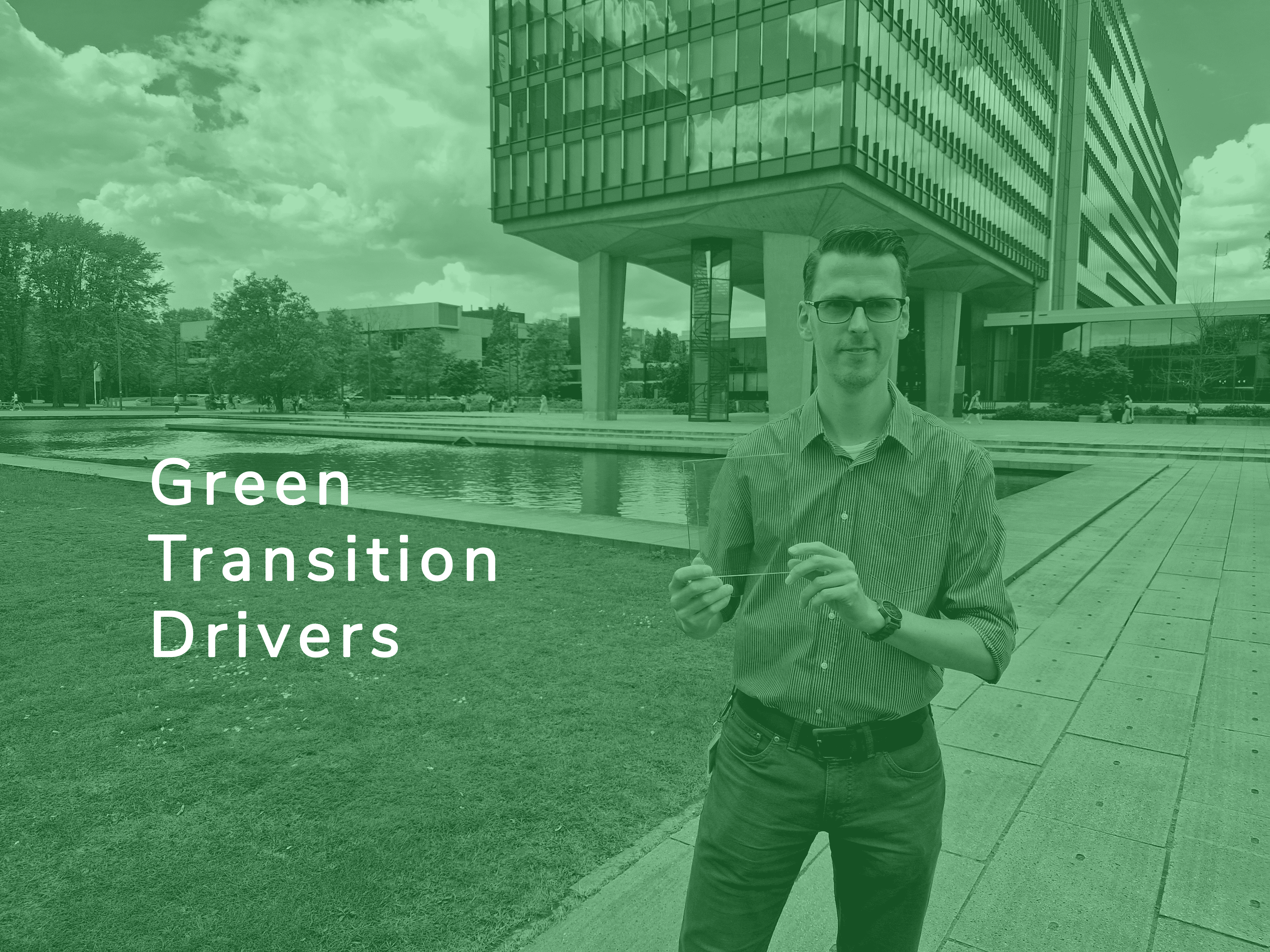
When entering the YES!Delft building on the Delft University of Technology campus, one can undoubtedly feel the bustling vibes. Past the entrance of the startup incubator, a corridor displaying some of the innovations developed by the resident companies leads to a hall. Chatter and ping-pong ball bounces can be heard as young entrepreneurs rush from the coffee machine to a meeting. Tijmen de Jong, CTO and co-founder of Tarnoc, is at one of the desks in this open space.
The Green Transition Drivers
Reducing emissions, optimizing resource use, and uptaking green energy are some of the practices we need to uptake to transition towards a greener economy. But who’s behind the green transition? In our series called the Green Transition Drivers, we put entrepreneurs and innovators working to make our economy greener.
“My cofounder Vincent – Vincent Wijdeveld, ed.- always calls me the ‘heat pump nerd’ because I know a lot about them and the different technologies they use. It’s a personal interest of mine and also the reason why we started Tarnoc,” says De Jong, introducing himself.
Founded in 2019, Tarnoc is developing an all-electric heat pump that wants to be the natural replacement for conventional gas boilers. The system features a turbine that, spinning at up to 120.000 rotations per minute, extracts heat from the outside air, delivering high temperatures (50 to 80°C). Like a gas boiler, the system supplies hot water for heating and showering, guaranteeing a 20 kW output. The system already captured the attention of many, as 10,000 people signed up for the waiting list.

High power in a small footprint
The innovation brought by Tarnoc’s electric heat pump lies in using the reverse Brayton cycle. This physics principle has been employed to cool off airplanes for fifty years now. In this thermodynamic cycle, a gas is compressed, cooled, and expanded to refrigerate. By contrast, the Delft team is applying this concept to heating, which De Jong considers simpler than other options. Furthermore, the heat pump uses outside air as a source, so the low-pressure side of the cycle remains constant throughout the year. “We have the same heating capacity even when the outside temperature is low, ” De Jong points out.
“The advantage is that with this technology, we can create a high heating output in a small footprint,” the cofounder adds. Conventional air-source heat pumps need a lot of airflow passing through the evaporator, and external fans are used to source it. Conversely, Tarnoc’s system uses five to six times less air and can source air via an external duct.


Easing installation to increase uptake
To be a natural replacement for gas boilers, the startup focused on making its heat pump as easy to install as possible. “If you live in a house that was built a few decades ago, and your boiler breaks down and you want to replace it with a heat pump, you’ll need to do a lot of work. It will come with installing floor heating, increasing insulation, and redoing the piping. This is a hurdle for a lot of people. Our primary motivation was to ease this process for people,” underlines De Jong.
Enabling this switch is one of the motivations that keeps Tarnoc’s CTO thriving. “I think people underestimate the amount of their CO2 footprint originating from their heating systems. Most people think a gas cubic meter and a kilowatt are equivalent energy-wise,” he says. Besides the fact that a cubic meter of gas is equivalent to roughly 10 kWh of energy, electric boilers are generally more efficient than gas-powered ones.
‘Why not us?’
De Jong and Wijdeweld used to be members of the same rowing club, where they met and thought of joining forces. “Both of us have an entrepreneurial mindset, and it was clear to us that there was a market opportunity for heat pump technology, so we thought, why not us?”
Since then, the journey started, and from the very first tests, Tarnoc can now count on a 12-person team, nearly entirely dedicated to further research and development of the technology. “Quite honestly, we thought it wouldn’t take us this long. We were a bit naive about how long it would take to bring this technology to market, but our product captured the attention of many, as over 10,000 people joined our waiting list,” De Jong adds. He hopes to start production by next year.

Meanwhile, Tarnoc has nine prototypes installed across the Netherlands, and “they need attention” as they run flawlessly at all times. Nevertheless, the current tests are running to the end now, as the startup expects to install new prototypes in the upcoming autumn.
As a technology enthusiast, De Jong is eager to understand whether the technology he is working on can be a game changer. At the same time, the clock is ticking as the EU aims to achieve climate neutrality by 2050. “We can’t go quick enough because 2050 is around the corner. I don’t think we will all be extinct in 20 years if we don’t fix climate change soon, but we need to fix it eventually, so why not start now?” he sums up.

